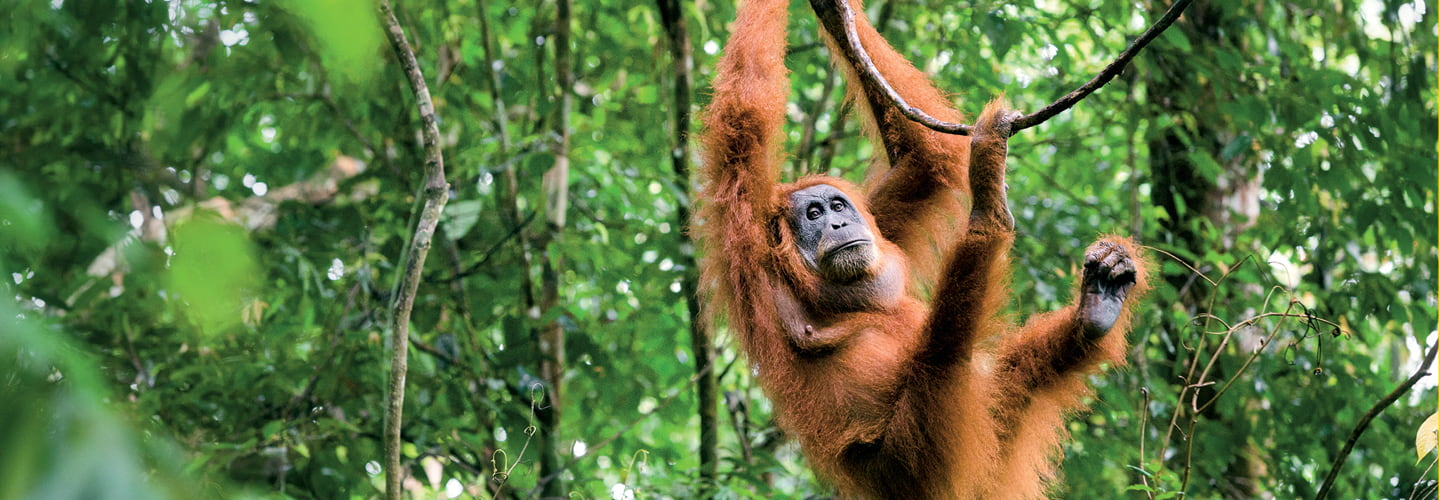Deep in the Sumatran rainforest, two orangutans, a mother and her child, prepare for a coming rainstorm. As the air grows thicker, the mother leads her child into a nest she built earlier that day. Then, collecting vines and leaves, she weaves an umbrella out of the foliage and holds it devotedly over her daughter.
The place these orangutans call home is the Leuser Ecosystem on the Indonesian island of Sumatra. It’s the only place in the world where great apes, elephants, rhinos, and tigers coexist. Its 6 million acres of dense rainforest are home to 389 species of birds and 130 species of mammals, including the world’s largest wild population of Sumatran orangutans.
Though they once thrived in healthy jungles from Indonesia to China, wild orangutans, which are among the rarest and most intelligent of the great apes, are now limited to the rainforests of two Southeast Asian islands that are part of Indonesia: Borneo and Sumatra. Mainly because of habitat destruction—in the form of mining, logging, and the leveling of vast numbers of palm trees by the booming palm oil industry—their populations have dwindled.
Two orangutans, a mother and her child, are deep in the Sumatran rainforest. As the air grows thicker, they begin preparing for a coming rainstorm. The mother leads her child into a nest she built earlier that day. Thenshe collects vines and leaves. She weaves an umbrella from them and holds it over her daughter.
The place these orangutans call home is the Leuser Ecosystem. It’s on the Indonesian island of Sumatra. And it’s the only place in the world where great apes, elephants, rhinos, and tigers coexist. Its 6 million acres of dense rainforest are home to 389 species of birds and 130 species of mammals. That includes the world’s largest wild population of Sumatran orangutans.
Wild orangutans are among the rarest and most intelligent of the great apes. They once thrived in healthy jungles from Indonesia to China. Now they’re limited to the rainforests of two Southeast Asian islands: Borneo and Sumatra. Both are part of Indonesia. Their populations have shrunk because of habitat destruction. This loss has been driven by mining, logging, and the leveling of vast numbers of palm trees by the booming palm oil industry.

